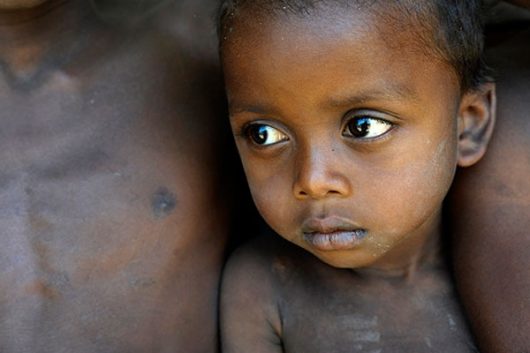Urgent Need for Food Aid Compounds Poverty in Madagascar
 As the weather changes from the 2015–2016 El Niño, its impact is still felt around the globe. For already drought-prone Madagascar, this means continued crop failure and a widespread need for emergency food aid. As rain has failed and market prices have risen, 1.1 million Malagasy have lost their food source, compounding the hardships already felt by many as a result of enduring poverty in Madagascar.
As the weather changes from the 2015–2016 El Niño, its impact is still felt around the globe. For already drought-prone Madagascar, this means continued crop failure and a widespread need for emergency food aid. As rain has failed and market prices have risen, 1.1 million Malagasy have lost their food source, compounding the hardships already felt by many as a result of enduring poverty in Madagascar.
While residents of Madagascar have faced significant periods of drought over the years, failing crops and widespread malnutrition, accompany one of their worst droughts in recent history. By some estimates, over 80 percent of the country has lost a source of steady food supply as a result of those crop failures. The subsequent rising of market prices has compounded the problem.
Food scarcity and market fluctuations in Madagascar mean increased hunger for one of the most impoverished nations in the world. Already, 70 percent of Malagasy people suffer from malnutrition, and the average inhabitant earns $1 a day.
Of those Malagasy people suffering from malnutrition, approximately one million are children. Children under the age of five are quite vulnerable to stunted growth as a result. Due to poverty in Madagascar, such stunting occurs there at one of the five highest rates in the world.
Compounding the many issues related to poverty in Madagascar is the lack of aid they receive. Its isolation as an island nation causes some to argue that inhabitants’ needs are frequently overlooked. The urgency of the crisis can also cause the aid which does arrive to be less effective. For example, for the starving residents of one Southern Madagascar town, when their crops failed they were sent seeds from USAID and the World Food Programme. However, their situation had been rendered so desperate that they were unable to wait to plant and harvest the crops, and instead ate the seeds themselves.
The crisis has been ongoing, with the past three years being marked by rising temperatures and irregular rainfall. Harvest projections predict continued food scarcity through September 2016, and potential crisis exacerbation through to March 2017.
In the face of augmented urgency in Madagascar, the need for emergency food aid is increasingly dire. Dina Esposito, Deputy Assistant Adminstrator to the Bureau for Democracy, Conflict, and Humanitarian Assistance (USAID) has announced that the U.S. will provide $8 million in aid to Madagascar as they face the current crisis and disconcerting projections of upcoming harvests.
The current 2016 rainy season has been the worst in the past 35 years in Madagascar, leading to the declaration of a national disaster in the country. However, despite the dire circumstances, hope for aid continues. For some inhabitants in especially hard-hit areas, relief comes in the form of a single daily meal, prepared and offered by nuns.
More broadly, relief and hope are drawn from international aid like that announced by USAID, as well as that already received from the United Nations World Food Programme and other organizations. Through contributions from organizations like these, Madagascar receives food aid, help with cultivation efforts and the opportunity to trade services for food.
– Charlotte Bellomy
Photo: World Food Programme
